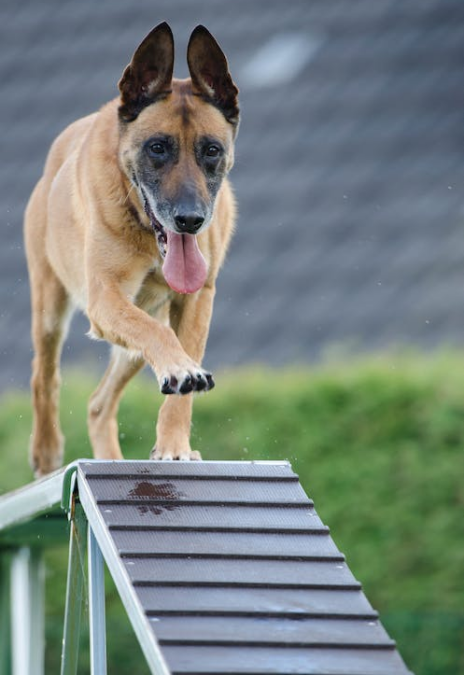When it comes to dog training, positive reinforcement is an effective and humane technique. It involves rewarding desired behaviors to encourage their repetition.
Positive dog training, also known as positive reinforcement training, is a method of dog training that focuses on using rewards and positive feedback to encourage desired behaviors in dogs while minimizing the use of punishment. The fundamental principle of positive dog training is to reward your dog for good behavior. This helps reinforce those behaviors and encourages your dog to repeat them.
Positive dog training relies on rewarding your dog with treats, praise, toys, or other positive stimuli when they exhibit the behavior you want. For example, if you’re teaching your dog to sit, you would reward them with a treat when they sit on command.
Dogs learn to associate good behavior with positive outcomes through treats, praise, and affection. This method helps teach commands and builds a strong, trusting bond between you and your canine companion. Read on to learn tips on positive dog training!

Step-by-Step Guide to Teaching Commands
- Start with Basics: Lay a solid foundation by teaching fundamental commands like “sit,” “stay,” and “come.”Use treats and enthusiastic for positive dog training when they follow the command correctly.
- Consistency Matters: Be consistent with your commands and rewards. Dogs thrive on routine and clear communication. This consistency helps them understand what you expect from them.
- Gradual Complexity: As your dog masters the basics, introduce more complex commands. Break them into smaller steps, and reward each step towards the final command.
- Patience Is Key: Remember, learning takes time. Practice patience and avoid punishment-based techniques. Positive dog trainingfosters a healthy learning environment.
Addressing Behavioral Issues
You must understand that every dog is unique. Behavioral issues can arise but can be effectively addressed withpositive dog training.
- Identify the Root Cause: To tackle a behavioral problem, first, identify the underlying cause. Is your dog anxious, scared, or seeking attention? Understanding the cause guides your approach.
- Redirect and Reward: Instead of scolding, redirect unwanted behavior towards a positive action. For instance, if your dog jumps on guests, teach them to sit and reward them for calm behavior.
- Consistent Correction: Correct the behavior whenever it occurs and reward the desired alternative behavior consistently. Over time, your dog will associate positive behavior with rewards.
- Quality Time: Spend quality time with your dog. Engage in play, go for walks, and create cherished memories together.
- Positive Presence:Be a source of positivity for your dog. Your presence should evoke feelings of safety and joy.
- Communication:Dogs may not understand words, but they grasp tones and body language. Maintain an encouraging tone for positive dog training.
Positive Dog Training: How to Practice It!
A strong bond between a dog and its owner is nurtured through trust and respect. It’s about teaching, guiding, and encouraging behaviors using kindness and rewards. Here’s how you can practice positive dog training:
1. Rewards for Positive Behaviors
Dogs respond incredibly well to rewards, just as you’d encourage someone with praise. You must celebrate and reinforce positive behaviors. Every achievement is celebrated with treats, from mastering basic commands to demonstrating good manners.
2. Personalized Attention
Every dog is unique, and so are their learning styles and preferences. You must take the time to understand each dog’s personality. This personalized attention ensures that the training is effective and enjoyable for your pet.
3. A Stress-Free Environment
Dogs, like humans, learn best when they’re comfortable and stress-free. A luxury dog boarding facility is designed to provide a calming environment. This is crucial for positive dog training. When dogs feel at ease, they are more receptive to learning and open to building a deeper connection.
4. Consistent Encouragement
Dogs thrives on consistency. Dogs are creatures of habit, and they find comfort in routines. Thus, you must maintain a consistent approach to training. This consistency helps dogs understand what’s expected of them. Moreover, it builds their confidence over time.

5. No Place for Punishment
Positive dog training negates the need for disciplinary methods. Scolding or punishment-based techniques can damage the trust between you and your dog.
You must on redirecting unwanted behaviors and rewarding the desired ones. Thus creating an atmosphere of trust and respect.
6. Bond Strengthening
Positive dog training teaches commands and strengthens the bond between you and your dog. When your dog associates learning with positive experiences and rewards, they see you as a source of joy and security.
7. Real-Life Application
Your positive dog training methods extend beyond the training sessions. You must give your dog an opportunity for consistent learning. Remember every moment contributes to their growth and development.
Final Word
At The Grand Paw, we take pride in our luxury dog boarding in Indio where dogs can play and relax. We offer a comfortable and lavish stay for your dog and ensure that they return home with enhanced skills.
We have spacious accommodations and a caring staff. We create an environment where your dog feels like a cherished member of our family.
Every moment is an opportunity for growth and enjoyment. These activities keep your dog physically active and stimulate their minds. Hence ensuring they have a fulfilling and rewarding experience during their stay.
Elevate your dog’s experience today. Discover the best luxury dog boarding in Indio. Contactus todayto learn more. Your dog deserves nothing less than the extraordinary.



